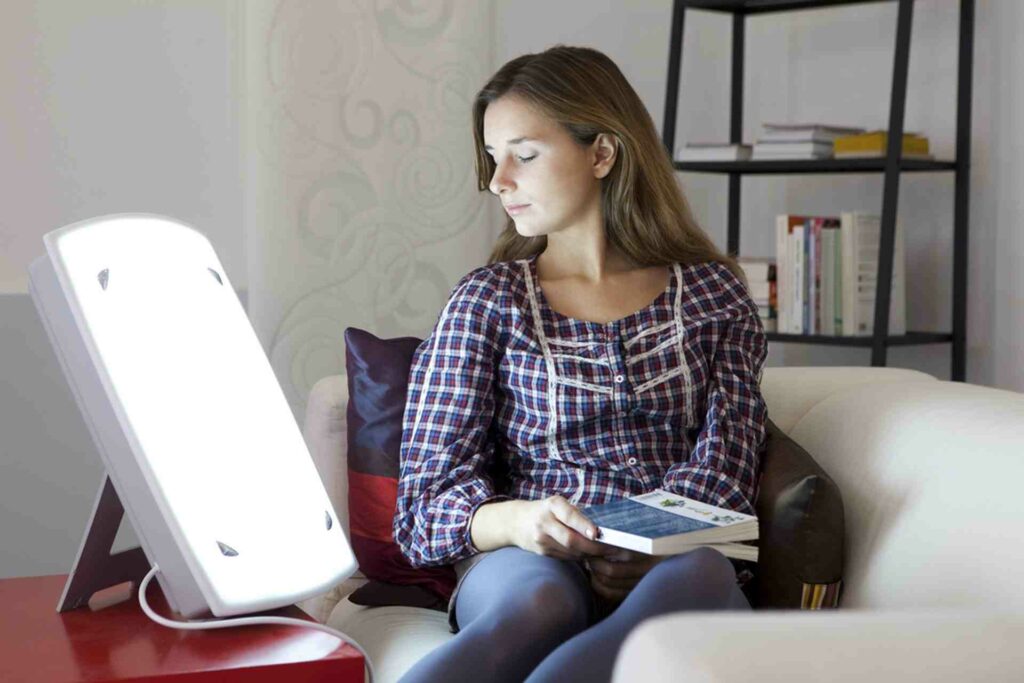If you have OCD, then you know that intrusive thoughts and compulsive behaviors can be incredibly disruptive and debilitating. While there are many treatments available for OCD, such as medication and therapy, some people find that light therapy helps to reduce symptoms. In this blog post, we will discuss light therapy for OCD and what you should know about it.
Contents
What Is OCD?
OCD stands for Obsessive-Compulsive Disorder. It is an anxiety disorder characterized by intrusive thoughts and images. It also includes urges that cause distress and intense fear or a strong urge to perform ritualistic behaviors in response to those thoughts. Common obsessions include fear of contamination, the need for order and symmetry, and worries about harm coming to oneself or another person. For example, some common compulsions include washing and cleaning rituals, counting rituals, checking rituals, and ordering/comparing rituals.
What Is Light Therapy?
Light therapy is a type of treatment that involves exposure to bright light. It is helpful in treating a variety of conditions, including seasonal affective disorder (SAD), insomnia, and certain psychiatric disorders. For OCD, light therapy has been found to be effective in reducing symptoms, such as intrusive thoughts and compulsive behaviors.
How Does Light Therapy Help With OCD?
Light therapy works by increasing serotonin levels in the brain. Serotonin is involved in mood regulation, so when serotonin levels increase, it can help reduce symptoms of OCD. Studies have shown that light therapy can have positive effects on people with OCD after just one session of exposure to bright light for 30 minutes or more. This can help to reduce the severity of symptoms, such as anxiety and compulsions.
Benefits Of Light Therapy In Treating ODC
There are various benefits to using light therapy for OCD, including:
- It is a non-invasive, safe treatment option.
- This can be used in combination with other treatments such as medication and psychotherapy.
- It has been found to reduce obsessions, compulsions, and anxiety levels in people with OCD.
- Light therapy can be done at home, without the need for a professional.
- It can help improve mood and quality of life.
How To Start Working On Light Therapy?
There are several ways to start working on light therapy to treat OCD:
- Talk to your doctor: Light therapy often requires a prescription, so it’s important to talk to your doctor before starting. Your healthcare provider can help determine the best course of treatment for you.
- Purchase a light box: A light box is an artificial light source used in light therapy. You can purchase one online or through medical supply stores. It is important to make sure that the box emits bright enough light for effective results.
- Set up a routine: In order for light therapy to work effectively, it needs to be done regularly. Make sure you set up a consistent routine that works for you and stick with it every day.
Light therapy is an effective treatment option for people with OCD. If you are considering light therapy, it is important to talk to your doctor first and make sure that it is the right option for you. With a consistent routine and bright enough light exposure, you can find relief from intrusive thoughts and compulsive behaviors.
What Should You Know About Light Therapy for OCD?
Here are tips for getting the most out of light therapy for OCD:
- Firstly, Light therapy should only be used as part of a comprehensive treatment plan, including therapy and medication.
- Light therapy should always be done under the supervision of a healthcare provider.
- The intensity of light and the duration of exposure should be tailored to the individual’s needs.
- Exposure to bright light can cause eye strain or headaches in some people, so it’s important to take breaks throughout the day if needed. The intensity of the light needs to be bright enough for it to be effective.
- Regular use is essential for light therapy to be effective; it needs to be done consistently every day in order for results to occur.
- Even if you don’t feel any immediate effects, doing your light therapy session can help improve your symptoms over time.
- Light therapy can reduce symptoms such as intrusive thoughts and compulsive behaviors in people with OCD. However, it does not cure the disorder itself.
It is important to talk to your doctor or healthcare provider before beginning light therapy. They can help determine the best course of treatment for you.
Problem With Light Therapy
There are some possible side effects associated with light therapy for OCD. These include headaches, dryness of the eyes, and dizziness. It is important to talk to your doctor if you experience any of these symptoms. Skin issues are also possible if the lightbox is too close to the skin.
Also, light therapy cannot cure OCD itself, and it should be used in conjunction with other treatment options such as therapy and medication. This can help to ensure that you get the best results from your treatment plan.
Conclusion
In conclusion, Light therapy is an effective form of treatment for people with OCD. It is important to understand the basics of light therapy and discuss any concerns you may have with your healthcare provider before beginning treatment. With a consistent routine and adequate exposure to bright light, you can find relief from intrusive thoughts and compulsive behaviors. The key to success is to be consistent and follow the treatment plan prescribed by your healthcare provider. With proper use, light therapy can help you experience some relief from your OCD symptoms.
For more information and guidance, please contact MantraCare. OCD is a mental health disorder characterized by obsessions and compulsions. If you have any queries regarding Online OCD Counseling experienced therapists at MantraCare can help: Book a trial OCD therapy session


